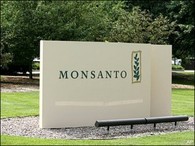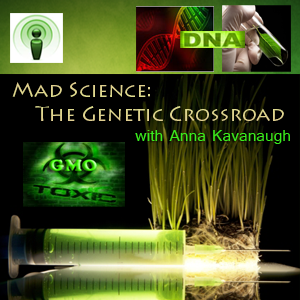GMO Hiding

With all the talk about GMO’s, how much of it really is in the marketplace? It might be shocking to know that GMO ingredients make up approximately 80% of all conventionally processed foods, and are also found in produce and meats. It is staggering to consider how pervasive genetically modified foods have become in our culture and also that they seem to have suddenly appeared “overnight." One of the reasons for this is the lack of labeling requirements. In the 1990’s, the FDA determined that GM foods were substantially equivalent to their conventional counterparts and therefore should not require labeling. It is interesting to note that this policy was designed and written by Michael Taylor, a former Vice-President of Monsanto who later assumed a position as the Deputy Commissioner for Foods at the FDA; a position he currently holds.
Without labels, it is difficult to know exactly which products contain GMO’s; we would probably be stunned to know how many. For example, conventional meats and dairy products are all big carriers, mainly because livestock feed is made from GMO crops – particularly corn and alfalfa – and also because many of these animals are injected with GMO hormones to increase their production or weight. Most baking ingredients contain some form of GMO in them – corn starch, corn syrup, corn flour, sugar, aspartame, chocolate, baking powder, nuts, various oils such as corn, canola, and cottonseed. Items like bread, muffins, cakes, crackers, and chips all contain GMO’s. If you are thinking beverages, all processed fruit juices, soft drinks, soy drinks, and milk have GMO’s in them. You will be hard-pressed to find any conventional food that does not contain genetically modified organisms.
GMO’s hide in other products too. Cotton is one of the largest GM crops around – it is also considered one of the dirtiest due to the heavy application of crop insecticides, which are extremely hazardous to human and animal health. Cotton is treated with toxic chemicals before it is harvested and all through its post-processing as a fabric – this presents a potential threat because these chemicals can be absorbed into the skin, making babies and young children particularly at risk. Also, the cottonseed hull, where many pesticide residues tend to accumulate, is where cotton seed oil is derived – and is used in salad dressings, shortening, and in a host of other processed foods. Estimates say that as much as 65% of cotton bi-product ends up in our food supply, whether directly through food oil or indirectly through milk and meat products. Another culprit is body powder made with corn starch – this includes baby powder and others. Since corn is one of the top GM crops produced in the world, it is highly likely that the corn starch in your body powder is laden with GMO that can be absorbed into the skin. And how about those cosmetic products? Since plant-derived ingredients are common among many cosmetics, you’ll find GMO’s there too – for example, canola – a huge GM crop – has been modified to produce high levels of Lauric acid, a key ingredient in soaps and detergents. Cosmetic ingredients are also derived from GMO ingredients like corn oil, corn flour, soybean oil, lecithin and proteins produced by yeast. The common denominator to most of these is that they are applied directly to the skin and therefore provide a pathway for GMO’s to enter the body. In fact, any product applied to the body such as: sunscreen, lip balm, or shampoos, etc. are all suspect unless they are labeled as “Organic”.
Without labels, it is difficult to know exactly which products contain GMO’s; we would probably be stunned to know how many. For example, conventional meats and dairy products are all big carriers, mainly because livestock feed is made from GMO crops – particularly corn and alfalfa – and also because many of these animals are injected with GMO hormones to increase their production or weight. Most baking ingredients contain some form of GMO in them – corn starch, corn syrup, corn flour, sugar, aspartame, chocolate, baking powder, nuts, various oils such as corn, canola, and cottonseed. Items like bread, muffins, cakes, crackers, and chips all contain GMO’s. If you are thinking beverages, all processed fruit juices, soft drinks, soy drinks, and milk have GMO’s in them. You will be hard-pressed to find any conventional food that does not contain genetically modified organisms.
GMO’s hide in other products too. Cotton is one of the largest GM crops around – it is also considered one of the dirtiest due to the heavy application of crop insecticides, which are extremely hazardous to human and animal health. Cotton is treated with toxic chemicals before it is harvested and all through its post-processing as a fabric – this presents a potential threat because these chemicals can be absorbed into the skin, making babies and young children particularly at risk. Also, the cottonseed hull, where many pesticide residues tend to accumulate, is where cotton seed oil is derived – and is used in salad dressings, shortening, and in a host of other processed foods. Estimates say that as much as 65% of cotton bi-product ends up in our food supply, whether directly through food oil or indirectly through milk and meat products. Another culprit is body powder made with corn starch – this includes baby powder and others. Since corn is one of the top GM crops produced in the world, it is highly likely that the corn starch in your body powder is laden with GMO that can be absorbed into the skin. And how about those cosmetic products? Since plant-derived ingredients are common among many cosmetics, you’ll find GMO’s there too – for example, canola – a huge GM crop – has been modified to produce high levels of Lauric acid, a key ingredient in soaps and detergents. Cosmetic ingredients are also derived from GMO ingredients like corn oil, corn flour, soybean oil, lecithin and proteins produced by yeast. The common denominator to most of these is that they are applied directly to the skin and therefore provide a pathway for GMO’s to enter the body. In fact, any product applied to the body such as: sunscreen, lip balm, or shampoos, etc. are all suspect unless they are labeled as “Organic”.






